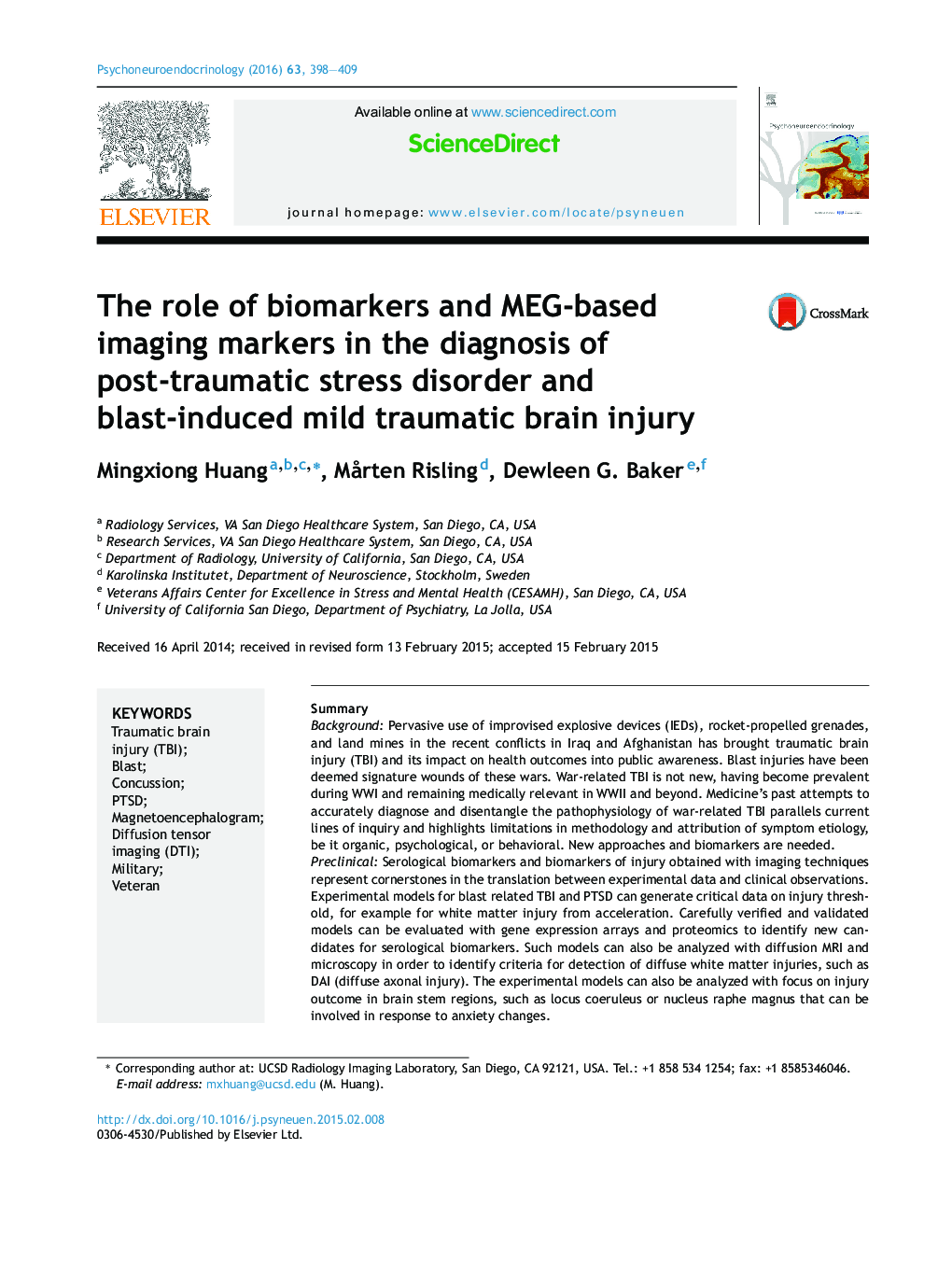| Article ID | Journal | Published Year | Pages | File Type |
|---|---|---|---|---|
| 6818613 | Psychoneuroendocrinology | 2016 | 12 Pages |
Abstract
Mild (and some moderate) TBI can be difficult to diagnose because the injuries are often not detectable on conventional MRI or CT. There is accumulating evidence that injured brain tissues in TBI patients generate abnormal low-frequency magnetic activity (ALFMA, peaked at 1-4Â Hz) that can be measured and localized by magnetoencephalography (MEG). MEG imaging detects TBI abnormalities at the rates of 87% for the mild TBI, group (blast-induced plus non-blast causes) and 100% for the moderate group. Among the mild TBI patients, the rates of abnormalities are 96% and 77% for the blast and non-blast TBI groups, respectively. There is emerging evidence based on fMRI and MEG studies showing hyper-activity in the amygdala and hypo-activity in pre-frontal cortex in individuals with PTSD. MEG signal may serve as a sensitive imaging marker for mTBI, distinguishable from abnormalities generated in association with PTSD. More work is needed to fully describe physiological mechanisms of post-concussive symptoms.
Keywords
Related Topics
Life Sciences
Biochemistry, Genetics and Molecular Biology
Endocrinology
Authors
Mingxiong Huang, MÃ¥rten Risling, Dewleen G. Baker,
